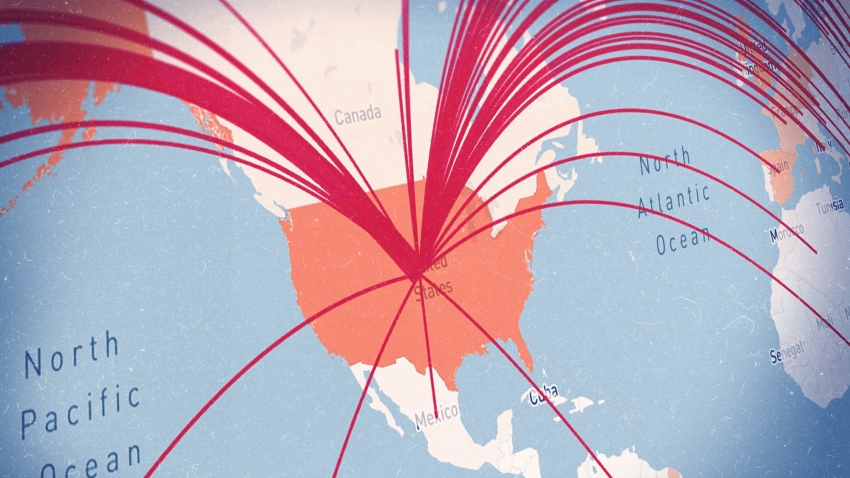

As the COVID-19 pandemic enters a new phase, punctuated by emerging hot spots and continuing global spread, a new analytical tool developed by RAND Corporation researchers allows policymakers to predict regional risks of importing cases of COVID-19. The tool, which melds information on infection rates with global air traffic data, has already produced a number of insights:
- Based on reported COVID-19 caseloads as of Jan. 31, 2020, the RAND tool indicates that one or two infected passengers were likely flying from China to international destinations via commercial air travel each day.
- However, the number of COVID-19 cases in China was likely 37 times higher than reported by China around that time. For instance, on Jan. 22, 2020, China reported having just 503 cases, but RAND researchers estimate that the true number was likely 18,700, based on the number of COVID-19 cases that had already been exported from China to other countries by that time.
- By late February 2020, countries outside China with modest numbers of confirmed COVID-19 cases represented the greatest risks of virus exportation to the U.S. because of their relatively high active case rates per capita and high levels of air traffic to the U.S.
- The risk of COVID-19 importation to Gulf Cooperation Council (GCC) countries (Bahrain, Kuwait, Oman, Qatar, Saudi Arabia and the United Arab Emirates) was greater from outside the region than from Iran, contradicting some narratives of how the virus was introduced to the GCC countries.
The COVID-19 Air Traffic Visualization (CAT-V) tool is unique in that it combines infection case data from Johns Hopkins University with detailed air travel data from the International Air Transport Association. Together, these data sets make it possible to generate estimates over time of the numbers of infected passengers who travel from one place to another.
The tool allows users to visualize the risk of virus importation or exportation associated with individual air-travel routes. Understanding the COVID-19 propagation patterns, regionally and globally, may help policymakers mitigate the resulting threats to public health.
To reach the estimate of China’s COVID-19 caseload being 37 times higher than the reported number of 503 on Jan. 22, the RAND researchers compared the number of passengers flying from China with the first reports of COVID-19 in destination countries. The calculations revealed that the cases in destination countries would have been exceedingly unlikely had the low reported case count in China been accurate.
“Our tool uses the official COVID-19 caseload figures that are reported by individual countries. For this reason, the tool itself cannot correct for inaccurate or misleading case reporting,” said Christopher Mouton, an aerospace engineer at RAND and leader of the project team. “However, by comparing the two sets of data embedded in the tool, we were able to estimate the likely actual COVID-19 caseload in China in January.”
Mouton added that the ratio between reported and actual COVID-19 cases in China certainly changed over time, and this ratio is expected to have narrowed after late January as testing and reporting became more robust.
RAND researchers continue to develop the CAT-V tool to estimate the spread of COVID-19 to and from multiple countries over longer periods of time. Future tool developments will include the ability to examine province- or state-level data and the ability to visualize routes from and to specific airports. RAND researchers will also explore the possibility of making the tool publicly available.
Although these analyses are based on the best available data, COVID-19 is an evolving threat, and even the best available data have significant limitations.
The CAT-V research was sponsored by the Office of the Secretary of Defense and the U.S. Air Force and conducted jointly within the Acquisition and Technology Policy Center of the RAND National Security Research Division and the Strategy and Doctrine Program of RAND Project AIR FORCE.


